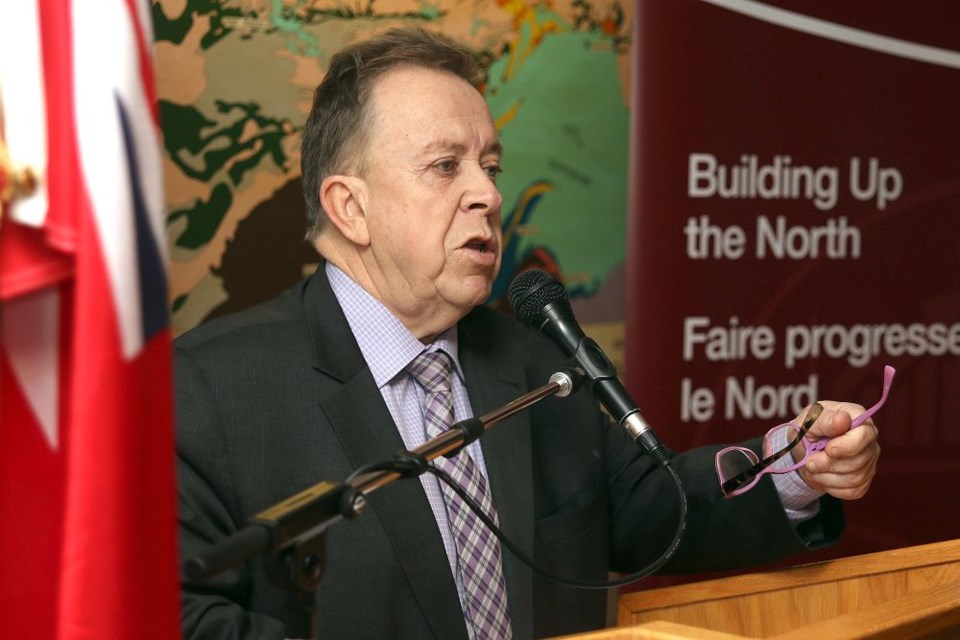Both the Ontario Prospector’s Association and the Thunder Bay Community Economic Development Commission are giving the province thumbs up for its recently released mineral development strategy.
OPA executive director Garry Clark said the report should provide better certainty to exploration in the province, praising plans to work on regulatory controls and the environmental impact mining has within Ontario’s borders.
Clark was especially high on a $5-million junior mining exploration program, which provides rebates to smaller companies looking to lay the groundwork for new mines.
“We’ve been working at this for about a year-and-a-half lobbying the government,” Clark said on Monday, three days after Minister of Northern Development and Mines Michael Gravelle revealed the 25-page strategy in Sudbury.
“I have to give the government credit, because they understand what’s happening and they’re going to put up the money, which brings us in line with all other provinces that have this type of funding.”
Doug Murray, chief executive officer of the CEDC, labeled it a good report, a renewal of a strategy first laid out in 2006.
The junior mining program, though just one part of the plan, is important, he said.
“The mines we’re seeing today, for example, New Gold in Emo, those were discovered eight, 10, 15 years ago by prospectors. It takes that long to get a mine in action,” Murray said. “Right now we’re seeing a bit of a drought in exploration work because of the financial situation and a little bit of luck in the mineral sector around the world. So there’s a little bit of a reluctance for people to invest.”
The plan is ambitious in scope, though not necessarily high on specifics.
It aims to keep the industry competitive and innovative, safe and environmentally responsible, efficiently and effectively regulated and positioned to ensure growth and prosperity. There are also provisions to improve regulatory efficiency, a call for enhanced Aboriginal voices and participation and the development of more highly skilled workers to meet expected labour demands.
Gravelle acknowledged the mining sector in Ontario faces plenty of challenges, from high energy costs to a drop in global commodities prices.
He pointed to the $120-million Northern Ontario Electricity Program, which the province made permanent this year, as one way the province is answering industry’s call.
“In essence it reduces their energy costs by 25 per cent,” he said. “It’s made a huge difference to the mining sector, as it has to the forestry sector, to (help) them make the necessary investments to move projects forward.”
“There are also a number of programs that are available within the ministry of energy.”
The bottom line, this is a good report, Gravelle said, pointing out that in 2014 mining was worth $11 billion.
The renewal was due.
“We needed to listen to northerners, we needed to speak with northerners and we put together a document that is receiving very strong support, one that focuses on us continuing to build a very competitive economy through the mining sector.”
Gravelle touched on the Ring of Fire and highlighted the billion-dollar promise his government made nearly two years ago to help build the infrastructure built to get minerals out of the ground and to market.
He said Monday he’s hopeful the new federal Liberal government will come to the table with its share, a process that had stalled under Stephen Harper’s Conservatives. But he did not put a timeline on when a mine might open in the lucrative Ring of Fire, located some 500 kilometres northeast of Thunder Bay.
While Murray said the plan is ambitious, at some point specifics will be necessary.
“There are some pieces in here that aren’t completely defined,” he said. “But then that leaves us some room to define them and to work with the government to make them defined.”
Sign in or register
- Messages
- Post a Listing
- Your Listings
- Your Profile
- Your Subscriptions
- Your Likes
- Your Business
- Support Local News
- Payment History
Registered Users
Already have an account?
New Users
Create a free account.
